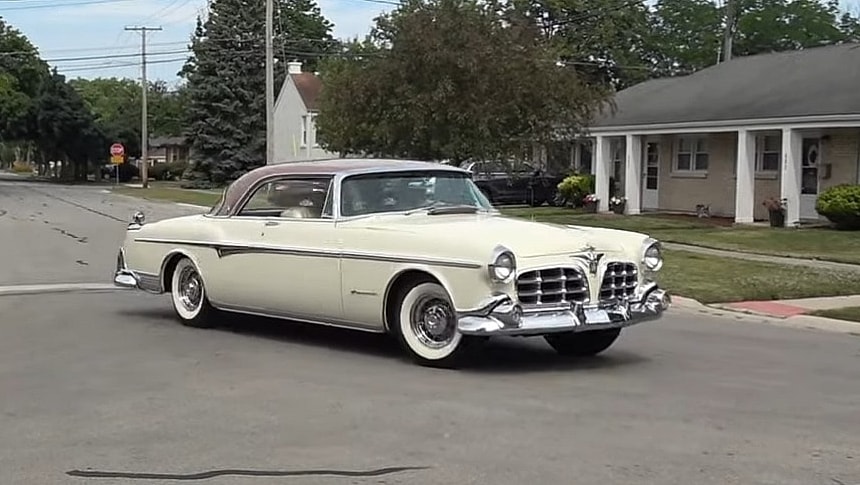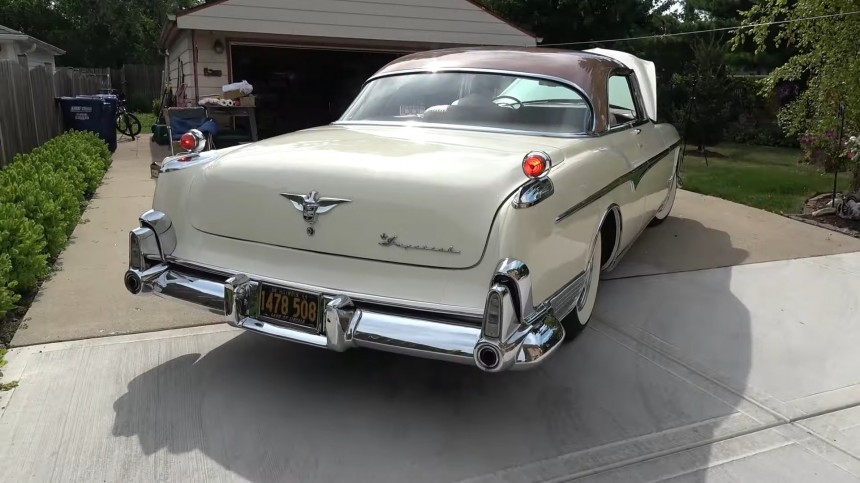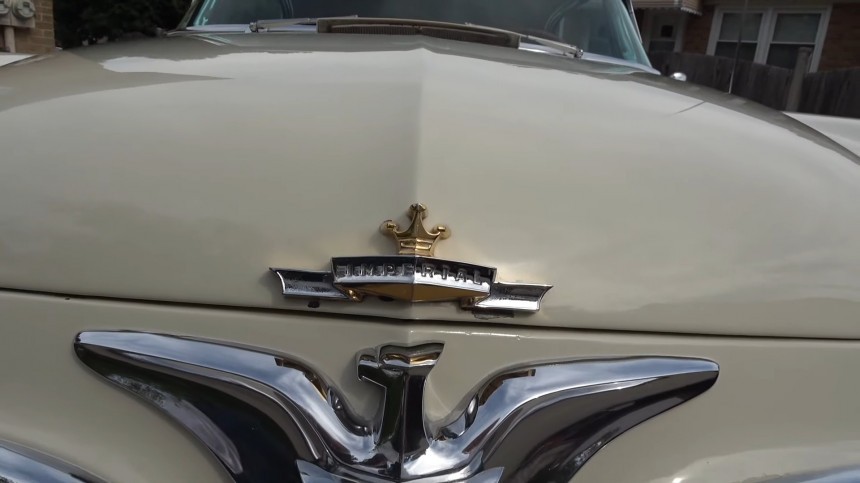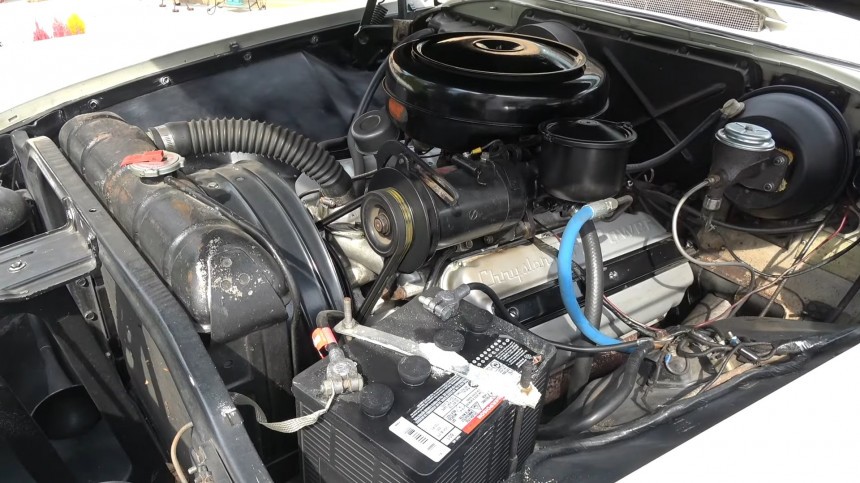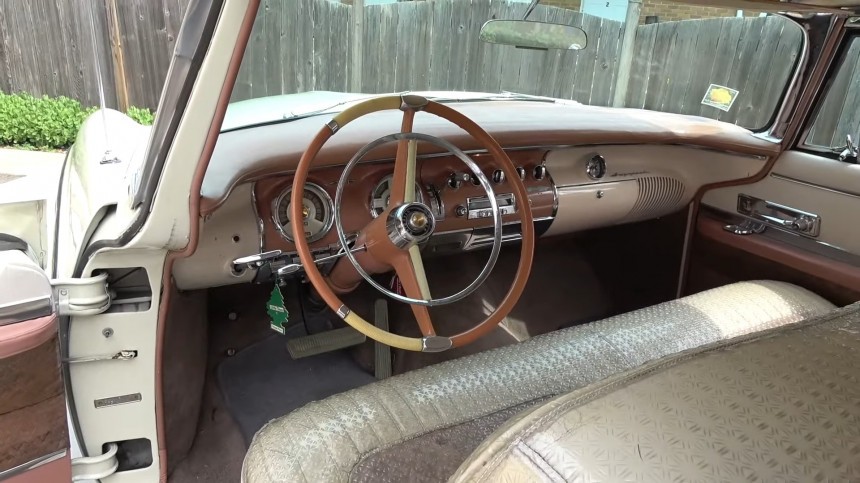In 1955, Chrysler Corporation introduced a new car brand, the luxurious Imperial. The name itself was nothing but old, having been used since 1926, but only as a series of Chrysler automobiles. By introducing the 100-million-dollar look design language, Chrysler separated the Imperial and promoted it to ‘separate division’ ranks. It was the year of the Chrysler 300, the one-horsepower-per-cubic-inch first-generation hemi V8. However, that iconic Mopar was preceded by a far lesser-known sibling, the Imperial Newport.
In the rarified atmosphere of the luxury segment of American car realms, Cadillac and Lincoln have been the main rivals post-war, especially after the mid-fifties, when Packard faded into oblivion. Unlike the years before the Second World War, when Auburn, Cord, and Duesenberg were big players in the high-price, high-quality field, the revived America shook off the ways of the old and embraced the future.
For a brief period, Chrysler Corporation challenged Ford-General Motors' dominance with the Imperial brand. Mother Mopar noted that Mr. and Mrs. Money would never lower themselves into walking through the front door of a car dealership that said ‘Chrysler.’ The automaker made a clear distinction between the middle-class-priced automobiles of the Chrysler brand and the high-end Imperial.
The Imperial had been a staple of ChryCo since its inception. Still, it was tied to the Chryslers, a nameplate in various models' lineups. The Imperial was proclaimed an independent brand when Virgil Exner’s Forward Look was launched in late 1954 for the 1955 automobiles. The move made a positive impression on buyers, with 11,430 cars sold under the new emblem.
It may not sound like a lot (and it wasn’t, compared to Cadillac’s 140,000-strong sales effort). Still, it gave the Imperial an aura of affordable exclusivity neither GM nor Ford could counter (the 10,000-dollar Continental under the Ford Motor Company umbrella was absurdly expensive and thus impractically rare).
Imperial offered four automobiles in 1955: a four-door sedan, a two-door hardtop – the Newport – and two eight-passenger four-door limousines (the Crown Imperials). Out of that 11k-unit production run, the limos accounted for 172 units, with the big sedan being the public’s favorite, with over 7,800 units. The sleek hardtop was a distant second, with a mere 3,418 examples assembled.
Still, it was almost twice as much as the Chrysler 300 – the original letter series car that, ironically, had no letter in its naming and came in 1,725 copies. Still, Mother Mopar favored her beloved 300 over the one-year-only Newport from Imperial (in 1956, the two-door luxury hardtop was called the Southampton, a name that stayed for the following years).
In all fairness, the Newport had the firstborn right, having arrived on the market two months before the coveted Chrysler 300. The 300 was a essentially Chrysler New Yorker with an Imperial Newport grille, bespoke badges, and serious Fire Power. The egg-crate front end is one reason why the two cars are often mistaken for one another at a glance.
But there are plenty of differences, albeit subtle and discrete. Look at the car in the video below, a 1955 Imperial Newport Survivor, and see for yourself. The Imperial had more chrome on the front, rear, and sides. It also had more intricate bumper moldings, and the inimitable ‘gunsights’ stoplights were a sure telltale sign.
The Imperial Newport also had two-tone liveries, while the first-year Chrysler 300 came in one of just three possible shades from top to bottom (black, red, and white). The example in our story is a survivor with a Platinum-Desert Rose two-tone body refreshed in the late nineties by a previous owner. Not long after, Kerry Joseph, the charismatic owner who tells the car’s story to fellow Chicagoan Lou Costabile, bought the car.
In 2002, Kerry and his brother were looking for a Chrysler Windsor when an ad for the Imperial Newport caught their attention despite not having any photos of the car. As fate would have it, Kerry’s brother lived four miles away from the seller in Los Angeles, California, so he went and checked the car out in person. The Imperial was already summoning a court of prospects, and Kerry got a phone call from his brother: ‘Buy the car.’
Apart from the repaint in the original colors, this survivor has had the brakes booster repaired by Kerry and the six-volt electrical system upgraded to an eight-volt. The underpowered electrical component was a major letdown for the Imperials – and other Chrysler products - with power equipment options (windows, seats). A simple voltage regulator adjustment and an upgrade to an eight-volt battery fixed the nuisance for good – something Mr. Joseph learned the hard-headed way.
After half a dozen depleted batteries, he finally made the change, and the car has never let him down ever since, even after 22 years of ownership and 65,542 miles (105,480 km). Except for the electrical makeover and the power brakes fix, he only had to wash and wax the car. Talk about the most ‘carefully inspected car in the world’ (one of the Imperial mantras of the fifties).
This car sports a legend of Detroit: the first-generation hemispherical heads V8 (Imperials only had eight-cylinder engines). A 331-cubic-inch FirePower motor puts out 250 hp and 340 lb-ft (with a low 8.5:1 compression)—254 PS, 461 Nm. A two-speed PowerFlite transmission gets the car going thanks to a 2.6:1 torque converter and a 3.54:1 rear axle.
The 1955 Imperial brochure notes three extra-cost options for the lineup: an air-conditioning unit, Solex Glass, and wire wheels. While often mistaken for Kelsey Hayes, the wheels are Motor Wheel and Rim Company, and they can only be shod with tube tires.
Power brakes and power steering were standard on Imperials, and in 1955, the transmission shifter was installed on the dashboard. It is not the famous push-button, but a proper (even if miniature) stick to select between Reverse, Neutral, Drive, and Low (with no Park position).
The Chrysler Air-Temp Air Conditioning was a $535 option over a manufacturer’s suggested retail price of $4,720. Kerry Joseph’s cool Newport doesn’t have the cooling add-on since it was originally ordered by a man from Portland, Oregon, who had little need for refrigeration in the cabin.
For a brief period, Chrysler Corporation challenged Ford-General Motors' dominance with the Imperial brand. Mother Mopar noted that Mr. and Mrs. Money would never lower themselves into walking through the front door of a car dealership that said ‘Chrysler.’ The automaker made a clear distinction between the middle-class-priced automobiles of the Chrysler brand and the high-end Imperial.
The Imperial had been a staple of ChryCo since its inception. Still, it was tied to the Chryslers, a nameplate in various models' lineups. The Imperial was proclaimed an independent brand when Virgil Exner’s Forward Look was launched in late 1954 for the 1955 automobiles. The move made a positive impression on buyers, with 11,430 cars sold under the new emblem.
Imperial offered four automobiles in 1955: a four-door sedan, a two-door hardtop – the Newport – and two eight-passenger four-door limousines (the Crown Imperials). Out of that 11k-unit production run, the limos accounted for 172 units, with the big sedan being the public’s favorite, with over 7,800 units. The sleek hardtop was a distant second, with a mere 3,418 examples assembled.
Still, it was almost twice as much as the Chrysler 300 – the original letter series car that, ironically, had no letter in its naming and came in 1,725 copies. Still, Mother Mopar favored her beloved 300 over the one-year-only Newport from Imperial (in 1956, the two-door luxury hardtop was called the Southampton, a name that stayed for the following years).
But there are plenty of differences, albeit subtle and discrete. Look at the car in the video below, a 1955 Imperial Newport Survivor, and see for yourself. The Imperial had more chrome on the front, rear, and sides. It also had more intricate bumper moldings, and the inimitable ‘gunsights’ stoplights were a sure telltale sign.
The Imperial Newport also had two-tone liveries, while the first-year Chrysler 300 came in one of just three possible shades from top to bottom (black, red, and white). The example in our story is a survivor with a Platinum-Desert Rose two-tone body refreshed in the late nineties by a previous owner. Not long after, Kerry Joseph, the charismatic owner who tells the car’s story to fellow Chicagoan Lou Costabile, bought the car.
Apart from the repaint in the original colors, this survivor has had the brakes booster repaired by Kerry and the six-volt electrical system upgraded to an eight-volt. The underpowered electrical component was a major letdown for the Imperials – and other Chrysler products - with power equipment options (windows, seats). A simple voltage regulator adjustment and an upgrade to an eight-volt battery fixed the nuisance for good – something Mr. Joseph learned the hard-headed way.
After half a dozen depleted batteries, he finally made the change, and the car has never let him down ever since, even after 22 years of ownership and 65,542 miles (105,480 km). Except for the electrical makeover and the power brakes fix, he only had to wash and wax the car. Talk about the most ‘carefully inspected car in the world’ (one of the Imperial mantras of the fifties).
The 1955 Imperial brochure notes three extra-cost options for the lineup: an air-conditioning unit, Solex Glass, and wire wheels. While often mistaken for Kelsey Hayes, the wheels are Motor Wheel and Rim Company, and they can only be shod with tube tires.
Power brakes and power steering were standard on Imperials, and in 1955, the transmission shifter was installed on the dashboard. It is not the famous push-button, but a proper (even if miniature) stick to select between Reverse, Neutral, Drive, and Low (with no Park position).
The Chrysler Air-Temp Air Conditioning was a $535 option over a manufacturer’s suggested retail price of $4,720. Kerry Joseph’s cool Newport doesn’t have the cooling add-on since it was originally ordered by a man from Portland, Oregon, who had little need for refrigeration in the cabin.
